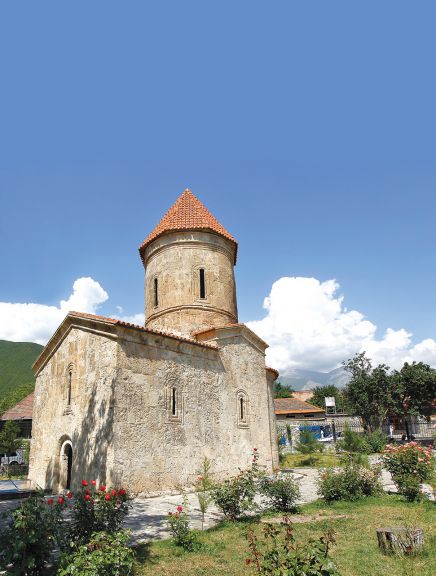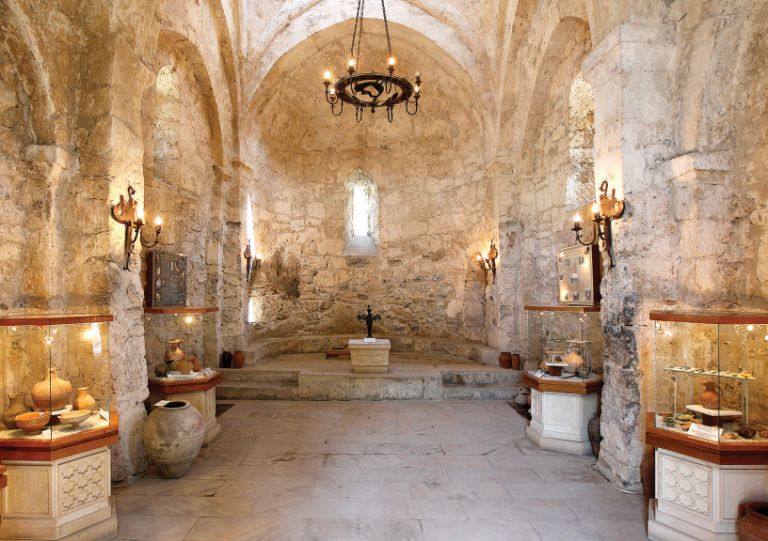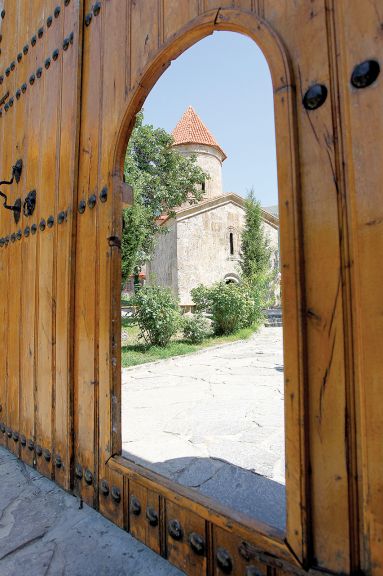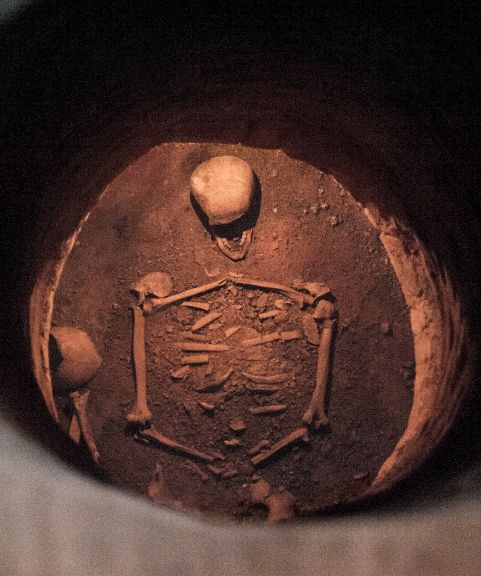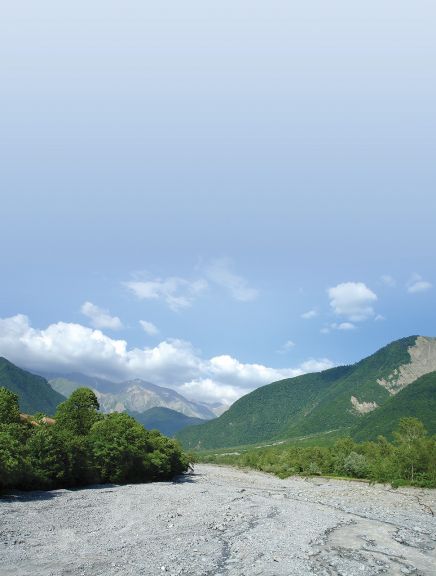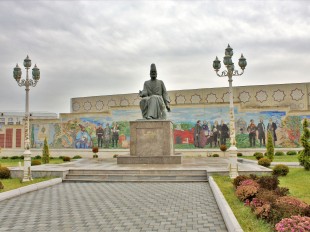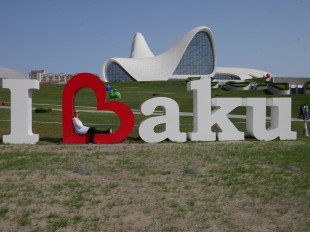15 years have passed since archaeological excavations by a joint Norwegian-Azerbaijani team in the summer of 2000 sought to dispel the many myths surrounding the Caucasian Albanian church in Kish, which according to oral legend was built in the 1st century AD. The results of carbon dating attributed the current building to about the 12th century but revealed that the site was most likely used for religious purposes for several millennia before that. Although the exact history and nature of the church is still debated it remains a fascinating place to visit, as writer Gunel Manafli recently discovered.
As we walked up the cobbled street we were returning in spirit to the distant past, spinning through the pages of history, as if these stony roads and even the walls were speaking to us about what they had witnessed over the centuries. This was the Albanian temple in the foothills of the Greater Caucasus Mountains in the village of Kish, 700m above sea level and northwest of the ancient city of Sheki.
It seemed we were approaching the sort of mysterious and magical tower described in fairy tales
The road to Kish
We crossed the bridge over the Kish River, notorious locally for its threat of flooding, imagining everything that has been written about the danger it poses – once, in 1772, it flooded and destroyed the city of Sheki and created a stony desert in the place of streets and gardens. But despite its dangerous and unpredictable nature, it retains a fascination and splendour.
From here, the road to the temple initially goes up a slope and then descends in the form of a semi-circle and continues. It then rises again and leans westwards; all the while it seemed we were approaching the sort of mysterious and magical tower described in fairy tales, that soon we would see the magic of this enchanting place firsthand.
It was as though this path itself added its own beauty to the magic of the temple. The upper and lower sides were surrounded with homely gardens. It was summer and we admired the sight of the reddening cherries on the trees on the side of the road. Nature seemed to have weaved a giant green carpet and decorated it with colourful ornaments. The cobbled road with its beautiful views ascended for the last time and finally we reached the temple.
Air of piety in the Caucasus
There we saw the bust of the famous Norwegian anthropologist Thor Heyerdahl, who gave his blessing to the reconstruction of this unique historical monument, a temple dating back to Caucasian Albania, which is now on the UNESCO list of World Heritage Sites. The current structure dates back to the 12th century but archaeological evidence suggests the foundations relate to between the first and fourth centuries. It is considered one of the first churches in the South Caucasus.
Entering through the gate, we found ourselves surrounded by a very different aura, an air of piety and purity, which embraced our souls. And in this mood we looked through the Albanian graves and museum exhibits. According to the guide, the tower of the church and the wall adjoining were constructed with local materials – built with stone and plastered with lime. The remainders of the original walls surrounding the territory of the temple remain in some places and show that the temple is almost as big as the entire territory of the Maflar neighbourhood, suggesting that this was not merely a place of worship, but a sacred religious centre for the whole region.
A number of graves were found during the archaeological excavations of 2000 at the temple. Research then proved that the history of these graves began in the Bronze Age and covered a long period up to the late Middle Ages. Here, the tombs and the skeletons inside them evoked even greater interest. Our guide explained that seven people are buried in the temple’s tombs one on top of the other:
Even though according to Islam a second person may be buried in the same grave only after seven years, the same can’t be said about a tomb. No matter if three days or a month have passed since a person’s burial, the tomb is opened and another person can be buried there.
Nature seemed to have weaved a giant green carpet and decorated it with colourful ornaments
The tall human skeleton in the first tomb created a deep impression, preserved in the temple’s tomb and belonging to someone over two metres tall. For a moment, I imagined these ancient people armed with stony spears and axes and pursuing prey, as if their roar-like sounds were echoing from somewhere. I thought about the fact that these primeval people are our common ancestors and we are their successors, regardless of the nation we belong to now.
For a moment, I imagined these ancient people armed with stony spears and axes and pursuing prey, as if their roarlike sounds were echoing from somewhere.
We also learnt of the tradition to stick coins to the temple tower’s walls. The three-sided wall of the tower has the peculiar ability to attract metal and the coins stick due to the dampness on the walls; some say candles were used for many years and have left a layer of wax, some say the phenomenon is caused by air streams inside the tower. Visitors make a wish and throw coins against the wall - if the coin sticks, it means the person’s wish will come true. If their wish does come true, they should return and throw money at the wall once again.
In the 4-5m long yard situated in the northwest part of the temple is a flat stone 2m long and 1m wide. Some believe that it is possible to cure a child who is suffering from a mental or physical ailment, by placing them there for a day. Such magical features have made the temple sacred and this is the main reason the local population has made great efforts to preserve it.
Early history
A model of how the temple used to look is also here. Archaeological excavations have shown that its foundations are in the form of a cup or the bottom of a ship and noted that the Egyptian pyramids also had similar foundations. The various layers of construction revealed during the excavations proved that the church has been rebuilt several times and that the history of the temple’s formation coincides with the spread of Christianity throughout Caucasian Albania. According to historical sources, in the first century, a student of the apostle Thaddeus, St. Eliseus, founded a church considered the mother of Albanian churches in Kish. However, even much earlier, before Christianity, it is believed this was a sacred place for people with primeval religious beliefs.
Leaving this fairytale mountain fortress – magical and mysterious – we felt as though we had journeyed to centuries past and experienced the traditions and beliefs of ancient times.
About the author: Gunel Manafli is originally from Sheki and studied journalism at university. She currently works in Baku for the newspaper New Musavat.
